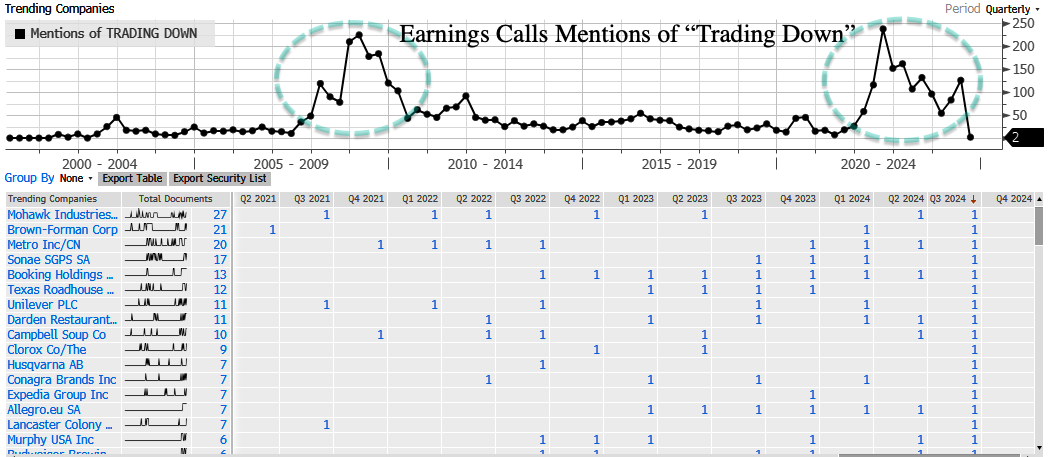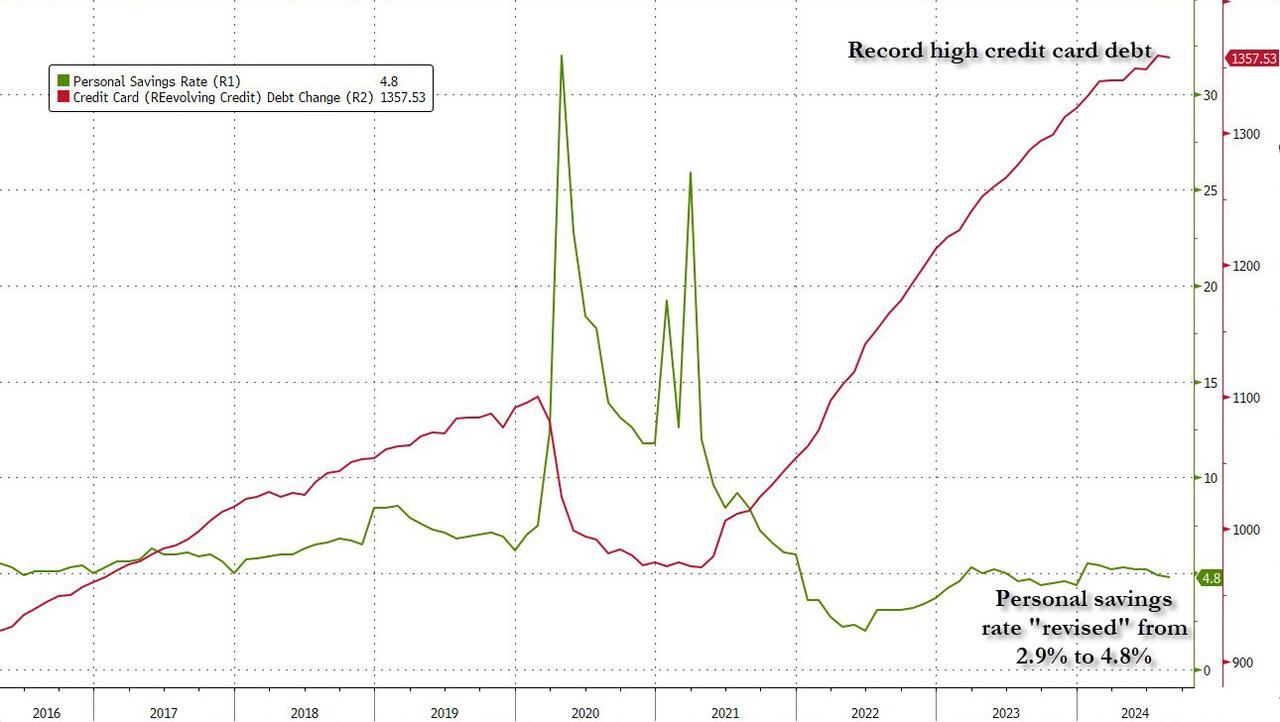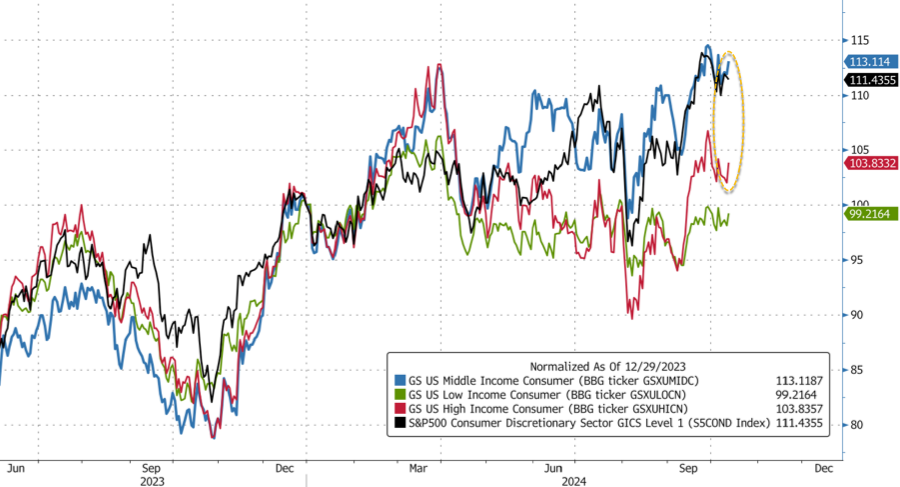Goldman hosted its Private Real Estate Retail (shopping center) Webinar on Thursday with panelists Mary Rottler from First Washington, Daniel Zatloukal from Inland Real Estate, and Joseph Tichar from Raider Hill. The webinar discussed many topics, including the consumer, 2025 same-store NOI growth, retailer bankruptcies, transaction market and cap rates, and the financing environment.
Our focus on the webinar centers around discussing high-end and low-end consumers trading down. This phenomenon occurs as macroeconomic headwinds mount, including elevated inflation and high interest rates due to backfiring 'Bidenomics.' More importantly, trading down occurs when incomes don't keep up with inflation or when purchasing power decreases.
Here are the key takeaways of the high-end and low-end consumers trading down, penned in a note by a team of Goldman analysts led by Caitlin Burrows:
The high-end consumer remains strong while lower-end sees softness, and both are trading down.
In terms of the higher-end consumer, panelists noted that across their grocer anchored centers exposed to the upper quartile of demographics, traffic remains strong. August traffic was up +8.7% yoy, with positive y/y monthly trends throughout 2024 and traffic up double digits vs 2022, driving optimistic expectations around the holiday season.
Panelists also highlighted that for low-end consumer, demand for essentials and services are still strong but discretionary spending such as luxury and cosmetics is relatively weak, and as a result, holiday sales will rely on how retailers incentivize customers to shop.
Panelists noted that the trade-down phenomenon is present in both high-end and low-end consumer. For example, Nordstrom (luxury department store chain) sales are flat to down while Nordstrom Rack (off-price department store chain) sales are up. Additionally, low-end consumer is experiencing some stress and trading down into discount retailers like Walmart, Target, and Sam's.
At the beginning of August, we noted that the last time "trading down" mentions spiked on earnings calls was during GFC.
The latest inflation data for September printed hotter than expected, and the persistent inflation storm has wreaked havoc on low/mid-tier households. The note above from Goldman is just more evidence that the consumer downturn has spread to wealthier households.
Could we really replay the '70s once again?
After all, the consumer has never been in worse financial shape, with record-high credit card debt and drained personal savings.
Looking at Goldman's consumer baskets, middle-income consumers are outperforming high-end consumers, while low-income consumers continue to face mounting pressure.
The big takeaway is that our consumer downturn theme continues and possibly now signals stress for the more wealthy households as the Biden-Harris inflation storm persists. Everyone appears to be pissed off about food inflation.
Also, an energy price shock at the gas pump could be ahead if Israel bombs Iran's crude oil export facilities. Price shocks of this kind could trigger a recession.
https://www.zerohedge.com/markets/goldman-finds-trade-down-phenomenon-strikes-rich-poor-consumers




No comments:
Post a Comment
Note: Only a member of this blog may post a comment.